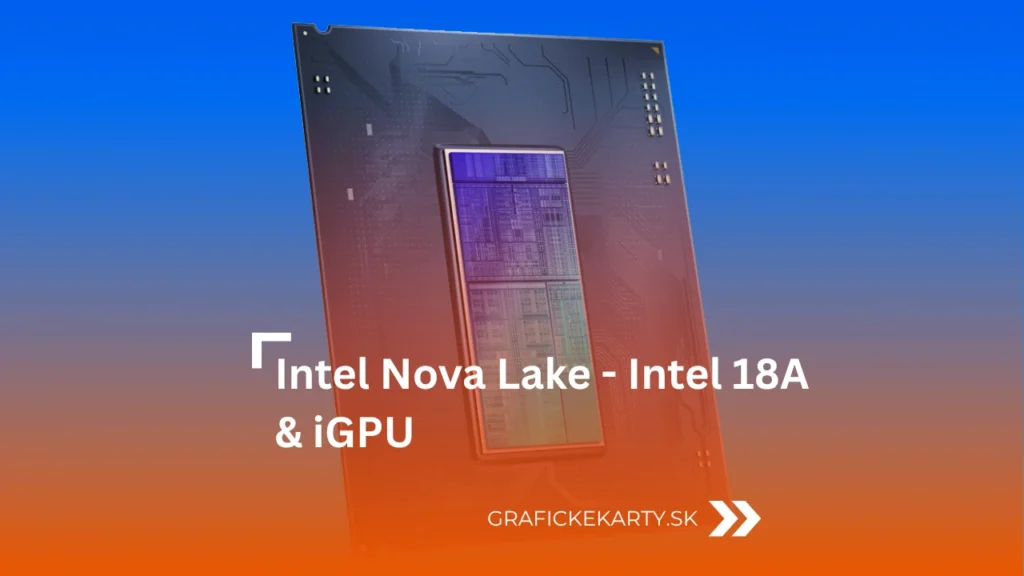Intel is already openly talking about its next big chapter, which is called Intel Nova Lake. Although it’s mostly leaks and anecdotal information so far, the available data suggests a major change for the entire desktop market. This new line is expected to appear in the second half of 2026 and deliver performance that Intel’s desktop processors haven’t offered so far. If these predictions prove true, it will be the biggest generational leap since Alder Lake – not just for gamers, but also for makers and professionals.
Intel 18A and up to 52 cores: what we know about Nova Lake
Intel has been pushing the boundaries of its own manufacturing processes for the last few years, and it is Intel Nova Lake that is set to be the first desktop line to be manufactured with Intel 18A technology. This is a new manufacturing process where transistors are shrunk down to the level of a few angstroms, which in practice means both higher efficiency and higher clock speeds for similar power consumption. For users, this means more performance without having to increase cooling noise.
The leaked information shows that Intel is also changing the platform’s foundation. When Intel Nova Lake launches, the LGA1851 socket will no longer be enough. The new series will bring an all-new LGA1954 socket, which means that the next upgrade will also require a new motherboard. In turn, this opens up room for better power, higher DDR5 memory frequencies, and faster connectivity with modern SSDs and graphics cards.
The most powerful models, according to the leaks, will offer up to 52 cores in a hybrid architecture – a combination of powerful P-core, power-efficient E-cores and new LP-E cores for even lower power consumption on simple tasks. Intel is also apparently planning significantly larger cache memory, which should reduce latency between cores and RAM. If confirmed, these specs will push the performance boundaries for gaming, rendering and multitasking to the next level.
Xe3-LPG integrated graphics: small chip, big leap
The Xe3-LPG architecture, which will be part of Intel’s Nova Lake processors, takes integrated graphics to a whole new level. Although it is “just” an iGPU, according to leaks, it will offer performance that can compete with lower-end standalone graphics cards. In practice, this means that even without a dedicated GPU, users will be able to smoothly play less demanding games in 1080p, quickly edit video or process AI tasks.
Intel’s Xe3 design emphasizes multimedia performance and power efficiency. Support for AV1 encoder, ray tracing, XeSS upscaling and new AI instructions are expected to speed up, for example, photo or video editing. This iGPU will also have a larger cache and higher clock speeds than the previous generation Xe2 from Meteor Lake, which will translate into better responsiveness for more graphics-intensive tasks.
For gamers, Intel Nova Lake may offer an ideal solution for smaller PC builds or all-in-one systems where there is no room for a dedicated card. Combined with powerful P-core and advanced cooling, it’s a versatile processor that can handle work, creative and entertainment.
Is it worth the wait?
The latest information suggests that change is coming, but if you don’t have a reason to upgrade, you can stay calm. But if you’re planning a new build in 2026, Intel Nova Lake could be a turning point worth waiting for. The first models probably won’t be cheap, but they’ll bring technologies that will keep the system performing for years to come.
Availability in the United States is expected to come first, with U.S. retailers and OEM partners receiving the initial shipments before other regions. Markets in Europe and parts of Asia typically follow weeks or even months later, depending on logistics and local distribution channels. Because of this, it’s best to wait for Intel’s official announcement regarding the final U.S. release date and pricing, as these will set the baseline for global availability.
If the leaks come to fruition, Intel Nova Lake will become one of the most exciting CPU upgrades of the decade – but only independent testing and availability will show whether it lives up to expectations.
Conclusion
The desktop market needs strong competition. AMD has long dominated in both core count and efficiency, but Intel Nova Lake may change that balance. If the leaks are confirmed, it will be a breakthrough comparable to the advent of hybrid cores with Alder Lake. It remains to be seen how Intel handles the 18A manufacturing process and pricing.
FAQ – Frequently Asked Questions
Does integrated graphics in a desktop processor make sense?
Yes. The iGPU serves as a backup if you don’t have dedicated graphics, while saving power in normal use. It makes your computer work without a separate GPU.
Can an iGPU and dedicated graphics work together?
In some programs, yes. For example, for video or AI tasks, the system can use the iGPU for decoding and the dedicated card for rendering, which speeds up processing.
What does the new Xe3 iGPU bring to Intel Nova Lake?
Xe3 improves performance, bringing AV1 support, ray tracing and AI acceleration. This enables it to handle multimedia and creative tasks without the need for a separate graphics card.
Is Intel Nova Lake worth the wait?
If you’re planning to upgrade in 2026, definitely yes. Nova Lake will bring a new architecture, an 18A process and higher performance, but it won’t be until the official launch in Europe that we’ll see the real availability.

